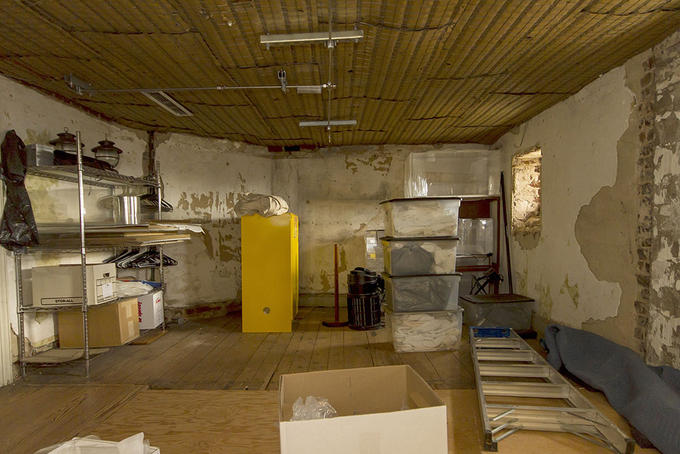
Monticello's Nursery Being Restored, Part I
Of all of the 2nd and 3rd floor spaces currently undergoing study, restoration, and re-interpretation at Monticello, the Nursery is the most complex as it requires extensive architectural restoration. After Jefferson’s death, Jefferson Monroe Levy, who owned Monticello from 1878-1923, divided the Nursery into three sections--a vestibule, storage room, and bathroom. The bathroom and vestibule were removed by the Thomas Jefferson Foundation in the 1950s but the space was left unrestored. More recently, this space served as a storage room. The Nursery was rarely seen, even by staff! Plans are now underway to study and restore this room to show its function after Jefferson’s retirement from the presidency. Here we can discuss how the youngest members of Jefferson’s family were cared for by their mother and enslaved women, especially Priscilla Hemings.

Manuscript evidence indicates that Jefferson specifically designated a room to serve as a nursery in the expanded Monticello in the 1790s. What might have been speculative or hopeful became a reality in 1809 when his daughter Martha Jefferson Randolph and her family moved to Monticello. Only the youngest children would have lived in the Nursery, adjacent to their mother’s room, eventually graduating to various sleeping arrangements throughout the upstairs. Priscilla Hemmings cared for approximately a dozen of Jefferson’s grandchildren, great-grandchildren and visiting cousins. According to the overseer Edmund Bacon, the Randolph children “. . . were very much attached to their nurse…”
Staff from the Restoration Department began the 2014 season by removing inappropriate features such as cement plaster and modern insulation. They are now sampling wall surfaces and investigating any surviving original elements such as molding, flooring, and wall plaster. Meanwhile, curators are surveying family documents-- inventories, letters, and notes--to identify what furnishings were used in the Nursery. Monticello’s collection happily includes original baby clothes, including these red leather shoes, ones that may have once trod the floorboards of Monticello’s Nursery.
The Mountaintop Project is made possible by a transformational contribution from David M. Rubenstein. Leading support was provided by Fritz and Claudine Kundrun, along with generous gifts and grants from the Sarah and Ross Perot, Jr. Foundation, the Robert H. Smith Family Foundation, Mr. and Mrs. John H. Birdsall, Mr. and Mrs. B. Grady Durham, Ms. Jacqueline B. Mars, Mr. and Mrs. Forrest E. Mars, Jr., Mr. and Mrs. John F. Mars, the National Endowment for the Humanities, Charlotte Moss and Barry Friedberg, the Cabell Foundation, the Richard S. Reynolds Foundation, the Garden Club of Virginia, and additional individuals, organizations, and foundations.



